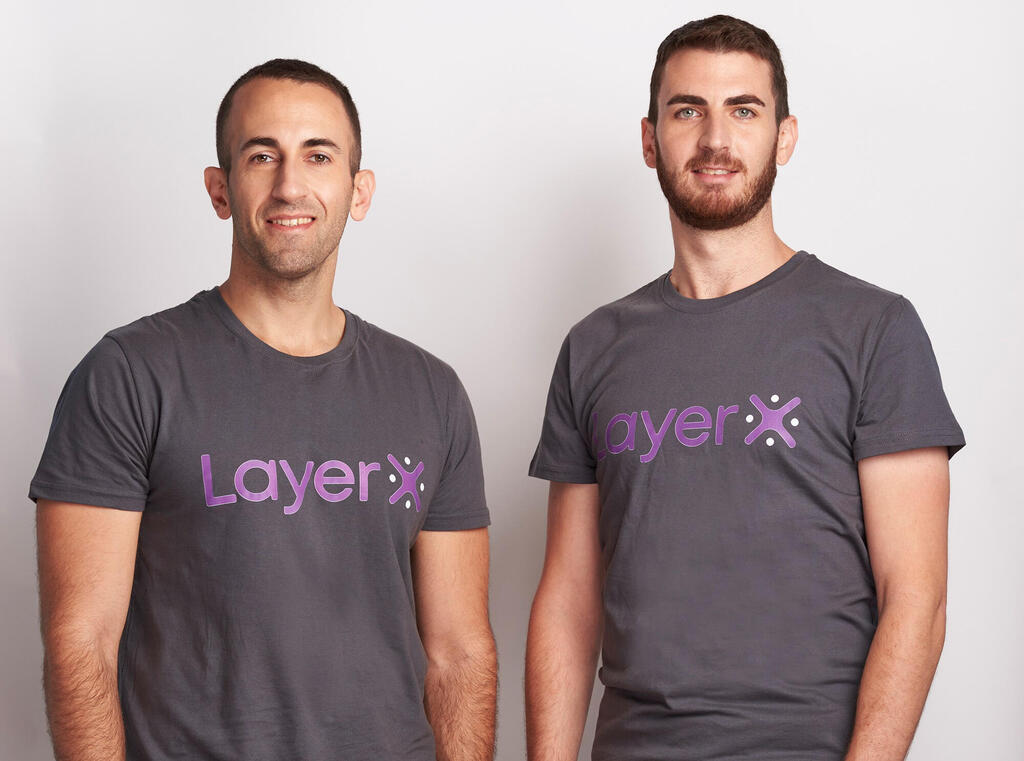Lessons From a Workforce Sent Home

 Could “Partially-Distributed” be the Model of the Future?
Could “Partially-Distributed” be the Model of the Future?
A few months ago, before the world got turned on its head by the COVID-19 crisis, I was discussing the concept of “fully distributed” companies with a colleague. For those of you who have not heard the phrase before, it refers to companies which have been built, from day one, as fully remote, maintaining no physical presence, with all employees working from home. The model has gotten a fair amount of attention recently, pre-COVID-19, thanks to companies like HashiCorp, which make it seem like fully distributed is the way of the future.
Only a couple of months have passed, and now all of us (that is, those whom still have jobs) have been forced to work from home. From startups to traditional companies, everyone has moved to that “fully distributed” model on a moment’s notice. It’s been a tough few weeks, but overall, the feedback I’m getting is very positive, at least from startups and other tech companies. Just last week I spoke about this with two different portfolio CEOs, both of whom said that productivity is up, and now neither are certain that heavy investments in grand offices (plus the additional associated costs) make sense anymore.
So is going “fully distributed” a practical and attainable goal for every company out there? Is this going to be the next new norm? Well, there are many reasons why it’s probably not. But there are definitely some major benefits that come along with the concept which need to be examined, especially in the crazy time we’re going through now — and perhaps for the future, too.
The (Many!) Benefits of Going Remote
You have to agree that even before the world was sent home, the concept of going remote was an intriguing one, with a whole lot of benefits to the company and the employees. Recent interesting stats show that remote workers are 13 percent more efficient than their in-office counterparts, they are 28 percent more engaged, and employees who work from home report they are happier than office-based employees. Lastly, businesses save, on average, $1,100 per worker, per year on remote employees.
But truthfully, it goes even further. Nearly every major city around the world has spent years fighting traffic congestion; each day most people sit in traffic just to get to and from work. This wastes time which could be used on more productive activities, but it also pipes more pollution into the already-polluted air. Five years ago, one could have claimed autonomous vehicles and hyper loop trains would be the solution to this problem, but now we know these technologies are going to take (a lot!) more time to become mainstream. Meanwhile, cutting down on the portion of daily commuters sure looks like the most promising option here.
But traffic is not the only issue. Think about the problem of finding and hiring top talent; this is a headache we are all familiar with. If you run a hot tech company located in the heart of Silicon Valley or another tech hub, hiring employees can be a real nightmare. The cost of hiring employees who already live in your area — who also have the right skill set — is super high. But even more so, churn is significant and your good employees will get great offers from other companies, likely leaving you fairly quickly.
Now consider that a distributed company can just as easily recruit someone in a different city, or even someone on the other side of the country (by the way, I’m not talking about recruiting someone from a foreign country). The advantages are huge and you’ll probably get much more for your buck–more talent, more commitment, higher motivation, etc.
Moreover, the technology to support such a setup has been here for a while. Audio and video conferencing technologies have been available for years and work pretty well. Even the security freaks among us should feel comfortable with the concept of working at home. Technologies such as VPNs, which have been around for ages, are being used with a degree of success in the current situation. And more modern zero trust and cloud technologies like Software Defined Perimeters (SDP) and Mobile Device Management (MDM) tools mean employees can access resources and use their own devices securely even outside a traditional office setting. If we can make it through this current crucible unscathed in terms of security, we should be well-equipped to make it through more “normal” times securely as well.
That’s definitely some food for thought.
But is a Fully Distributed Model Practical?
“So”, my colleague asked me, “what’s keeping fully distributed companies from becoming the norm?”
I believe it’s this small, annoying element called human nature.
As humans, we are genetically engineered to live as part of a herd, not too different from a herd of cattle or a troop of chimpanzees. Wandering alone in the savannas of the 21st century is not an option most people feel comfortable with (as illustrated by the clear repulsion to social distancing we’re experiencing now). Even more so, corporations are built on the foundation of combined DNA, created by-and-large by spending face-to-face time together. Walking in and out of conference rooms together, arguing over the coffee machine, and gossiping over a quick lunch are small episodes needed to build the culture of a company. And these types of interactions are almost impossible to create remotely. This is why most companies are not fully distributed and it’s also why employees who do work remotely may not feel as committed.
So clearly, going FULLY distributed is not the answer for most companies. A more practical option is that of going partially distributed. Partially distributed means employees have the ability to work from home, in the office, or a combination of both. It means if an employee wants to work from home because it fits with their lifestyle better, or they happen to live across the country, this is an available option. It also means your employees who thrive on coming in each day, loving the camaraderie that comes with face-to-face interactions, can continue to do so.
It does not mean the decision to come in each day should be a free-for-all. Workplaces need structure and if everyone decides on their own when they’ll be showing up (or not), you’ll wind up with a disaster on your hands. To ensure your partially distributed model is practical and productive, each group/team will need to define its own practices to make sure the right balance is found between the need for flexibility and the need for a strong DNA.
Making a Partially Distributed Team a Successful One
If you decide the idea of going partially distributed is right for your company, it turns out that there are a lot of things you can do to create a feeling of “belonging”, which is often the most challenging problem to tackle. First of all, it’s critical — CRITICAL — to hire “right”. This means that amongst the qualities you’re looking for when searching out your new batch of remote employees, make sure to look for people who care about collaboration but can work independently.
Next, make sure to have a flawless onboarding process. Onboarding new employees is one of the greatest challenges when it comes to building your remote team. If you fail to hook them into the culture and atmosphere you’ve trying to establish at this point, it will be MUCH more difficult to keep them engaged and happy long-term. So use this opportunity to send over some company swag like a fun coffee mug and a subscription to a music streaming service like Spotify of Apple Music. Make sure new remote employees know where they can get answers to their questions via a company knowledge hub. Video meetings are also crucial at this stage; now is the time to make introductions and help your new hires get to know everyone. During intro meetings, it doesn’t hurt to have everyone mention something they are personally interested in, outside of work, to create a feeling of kinship.
Now that you’ve got the onboarding process down, thankfully there are a boatload of platforms that will make collaborating and hanging out with those employees on your remote team a whole lot easier. You already know about Zoom for face-to-face meetings; here are some other platforms to help create the collaborative atmosphere you’re looking to build:
Slack: Slack is a workplace communication platform that allows for group conversations or one-on-one chats. It can be used across almost all devices, on almost any platform and is very intuitive. You can share files, make video or audio calls, and easily search for past topics in threads. It makes staying in constant communication with your team super simple and fun. The remote teams I know using it think of it as their work “homebase”.
Toggl: This time-tracking app is great for remote teams. It helps track time spent on tasks and create in-depth reports to understand time usage. The cool part about Toggl is that even if you forget to turn it on, it sends you reminders to set it. And if you forget to set it all together, it uses idle detection to calculate time spent on tasks.
Asana: This is a workflow management tool that makes organizing and tracking projects a breeze. It’s true there’s a bit of a learning curve to Asana, but you’ll probably get the hang of it pretty fast. And once you do, you’ll be able to see how projects are progressing without a lot of clutter. It’s super customizable, which makes it ideal for all kinds of teams and projects.
StatusHero: I really love this one; StatusHero is great because you never have to wonder “Hey, what’s Dave in Development doing right now?”. StatusHero lets everyone on your team know what your working on at the moment so no one gets bugged unnecessarily. Just set your status to “available” or “unavailable” and include a detail or two about what you’re working on at the moment to enjoy your distraction-free work time.
Google Docs: Here is a total pet peeve of mine; I send someone a document in Google Docs. They make some changes, corrections, edits, etc. Then they send it back to me — IN WORD. Okay, let’s get real; 2020 may be a doozy of a year so far, but it’s not the dark ages and there’s no reason to be using MS Word with its endless versions. Thanks to Google Docs, collaborating on documents has never been easier. With Google Docs, regardless of where we’re working, you and I can both work on the same document at the same time; I see your changes, you see mine — no need to download latest versions while serving up a little prayer that you’ve got the right one opened.
The Partially Distributed Work Model — A Force for Good
One day, COVID-19 will be a memory. There will be losses and scars, and I shudder to think about the lost jobs, the long-term effects to the economy. But I believe COVID-19 will have at least one positive impact, proving that a distributed work model can actually work. Going fully distributed is probably not an option for most of us, but I advise any CEO to consider going partially distributed. Done right, this model may translate to higher productivity, lower costs, and improved employee satisfaction. I hope the suggestions above help make it a more attainable reality for your company.
For more information, contact this blog’s author: Kobi Samboursky
Co-Founder & Managing Partner at Glilot Capital Partners



 Kobi Samboursky
Kobi Samboursky
 Lior Litwak
Lior Litwak